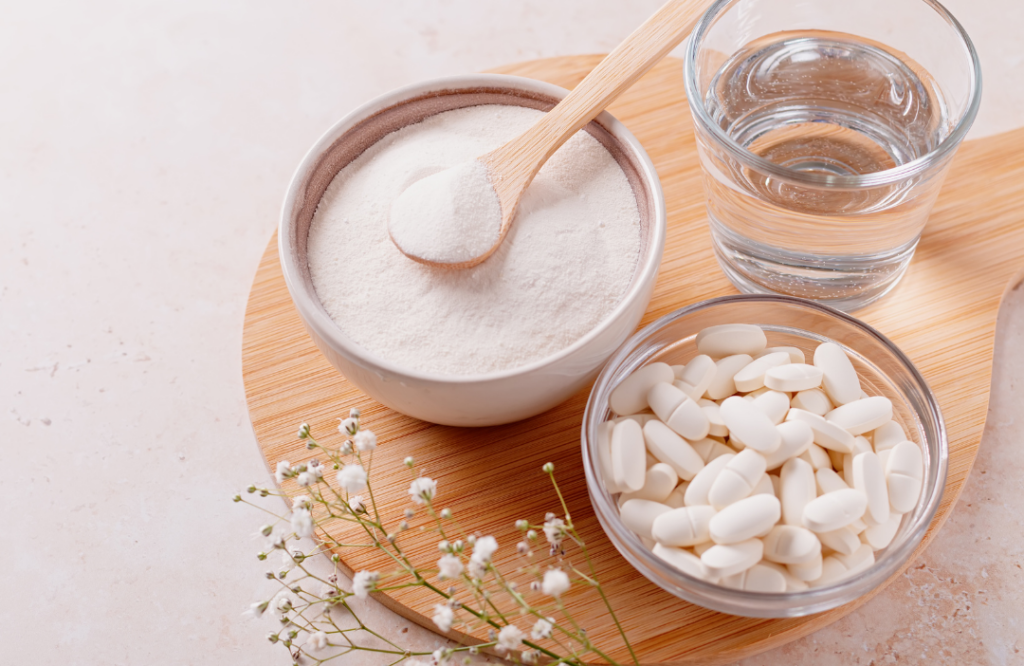How to Feel More Relaxed: the formula for stress resilience
Published on April 3, 2020 by Dr. Caitlin Gordon
Most of us imagine what our lives would be like if only we didn’t have the stress of money, our high-pressure job, our marriage, our kids, our sick parents, or whatever the BIG thing is in any given moment. But we spend much less time fantasizing about what our lives would be like if our tolerance for stress were higher so the things that feel stressful now no longer had the same impact. This is stress resilience, and we can create it. The key to feeling more relaxed on a daily basis comes down to reducing external stressors and/or increasing internal resources.
What is stress?
 Stress is the experience of external pressures being greater than your internal resources. It’s incredibly subjective. What one person finds stressful, another does not. This is due to differences in how internally resourced we each are as well as our differing levels of external pressures.
Stress is the experience of external pressures being greater than your internal resources. It’s incredibly subjective. What one person finds stressful, another does not. This is due to differences in how internally resourced we each are as well as our differing levels of external pressures.
Stress is also subjective because many external stressors are determined by our perception. One person may perceive deadlines to be an external pressure whereas another sees it as a fun challenge. Person one requires more internal resources based on their perception than person two does.
When external pressures routinely outweigh internal resourcing, we get sick. This type of chronic stress suppresses immunity and creates energetic stagnation which disrupts basic healthy functioning of the autonomic nervous system: impaired circulation, nitric oxide production, peristalsis, inflammation regulation, and on and on. Disease begins here. Fortunately, we have so much power to keep ourselves well.
There are two ways you can feel more relaxed on a daily basis:
1. Reduce external pressures.
- Delegating
- Saying no to things
- Creating better boundaries
- Being more selective in what you say yes to
- Asking for help
- Perhaps most importantly, by changing your perception.
Changing your Perception
- Consciously reframing sensations of anxiety as feelings of excitement and anticipation. Your body does not know the difference. Your mind determines whether the heart flutters, butterflies, sweating, and racing thoughts are anxiety or excitement.
- Questioning your habitual reactions to certain triggers. Do you feel stressed in the mornings because they are inherently stressful (no), or because you grew up in a household where your parents were rushed and stressed?
- Changing your narrative around what you find “stressful”. For example, you currently have a story that presentations are stressful. Decide that you’re going to approach presentations as a challenge to improve a valuable skill and that you find them exciting.
- Changing your story: If you don’t want to be someone who is stressed out by gloomy weather, or criticism, or a bad night of sleep, consider choosing a better story. “I love gloomy weather because it’s cozy and I want to make tea, cook good food, take a bath!” Or, “I may not have slept well, but I know it means I’m going to sleep SO well tonight” (whether that has been true in the past or not is irrelevant). In the past criticism has felt really triggering, but now “I choose to let this slide right off me because it doesn’t feel true”, or “I am grateful for this feedback that empowers me to grow!”
2. Increase internal resources for stress resiliency.
 Your internal resources are physical and emotional. These aren’t actually separate, but for the sake of simplicity, I’m going to break it down into two sections.
Your internal resources are physical and emotional. These aren’t actually separate, but for the sake of simplicity, I’m going to break it down into two sections.Physical Resources for Stress Resilience
- Optimizing your nutrition
- Dialing in restful and adequate sleep
- Getting enough movement each day
- Avoiding chemicals, toxins, and other environmental stressors
- Committing to nourishing routines and habits
For assistance in strengthening your physical resources, schedule a functional medicine call and I will put together a personalized plan for you.
Emotional Resources for Stress Resilience
- Reflect on what makes you feel good, happy, fulfilled, and calm and making time for that every single day.
- Spiritual or contemplative practices, whether it be prayer, meditation, yoga, journaling, or something else. This is a powerful way to build internal resources.
The more we practice feeling calm, steady, energized, grateful, hopeful, and loving, the stronger these neural pathways become. This is the basis of emotional and mental stress resilience. It is strength-training for your brain. This makes it easier for you to bounce back after acute stress, trauma, and illness, and it allows you to be less hooked into minor stresses throughout your day. Those neural pathways are like ruts in a dirt road. The deeper the groove, the easier it is to stay on that track. It takes a really big rock to jolt the car out of the groove, as opposed to a very shallow groove, where the wind might sway the tires into another track.
Emotional Resourcing is Cumulative Every single time you do something that makes you feel strong, joyful, relaxed, grateful, etc., you are digging a deeper rut for that experience to continue. The same is true for every time you spiral into shame, fear, guilt, anger, or other emotions that trigger your sympathetic (fight/flight/freeze) nervous system. These emotions aren’t bad. In fact, it’s important to cultivate some neutrality towards all emotions so we make space to feel it all. However, we don’t want to fuel these emotional states, which reinforces the stress-response “rut”.
Every single time you do something that makes you feel strong, joyful, relaxed, grateful, etc., you are digging a deeper rut for that experience to continue. The same is true for every time you spiral into shame, fear, guilt, anger, or other emotions that trigger your sympathetic (fight/flight/freeze) nervous system. These emotions aren’t bad. In fact, it’s important to cultivate some neutrality towards all emotions so we make space to feel it all. However, we don’t want to fuel these emotional states, which reinforces the stress-response “rut”.
Feeling vs. Fueling Emotions
Where’s the line between feeling and emotion and fueling a story? An emotion that arises organically will last a few seconds to a few minutes without a story attached. When you slow down enough to recognize it, name it, notice which physical sensations accompany it, and take some deep breaths while fully accepting the feeling, the emotional state will be processed and dissipate. If you exercise discipline around not allowing your mind to keep bringing up the trigger thought that fuels that emotional state, you won’t perpetuate the emotion for hours or days. If you struggle with not repeating the triggering thought, use distraction. Distracting with exercise is often most effective, even if it’s a 10-minute walk. Talking to friends, getting involved in a hobby, or listening to something uplifting (music, podcast) can help too.
A New Relationship to Stress
 Using the tools outlined in this article has the potential to completely transform your relationship to stress. You cannot create the perfect life where stress doesn’t arise. If that’s the goal, you’re setting yourself up for failure and burnout. But, you can feel more relaxed in the face of challenges. You can feel more ease around uncertainty. You can confront the unknown with less fear.
Using the tools outlined in this article has the potential to completely transform your relationship to stress. You cannot create the perfect life where stress doesn’t arise. If that’s the goal, you’re setting yourself up for failure and burnout. But, you can feel more relaxed in the face of challenges. You can feel more ease around uncertainty. You can confront the unknown with less fear.
These practices build stress resilience. Resilience is the ability to bounce back when you’re thrown off course and is the foundation of good health. When you cultivate stress resilience, you will rest soundly knowing no matter what curveballs life throws, you can handle it.
The contents of this site, including text, graphics, images, and other material are for informational purposes only. Nothing contained in this site is or should be considered or used as a substitute for professional medical or mental health advice, diagnosis, or treatment. Please schedule an appointment for personalized health advice.






